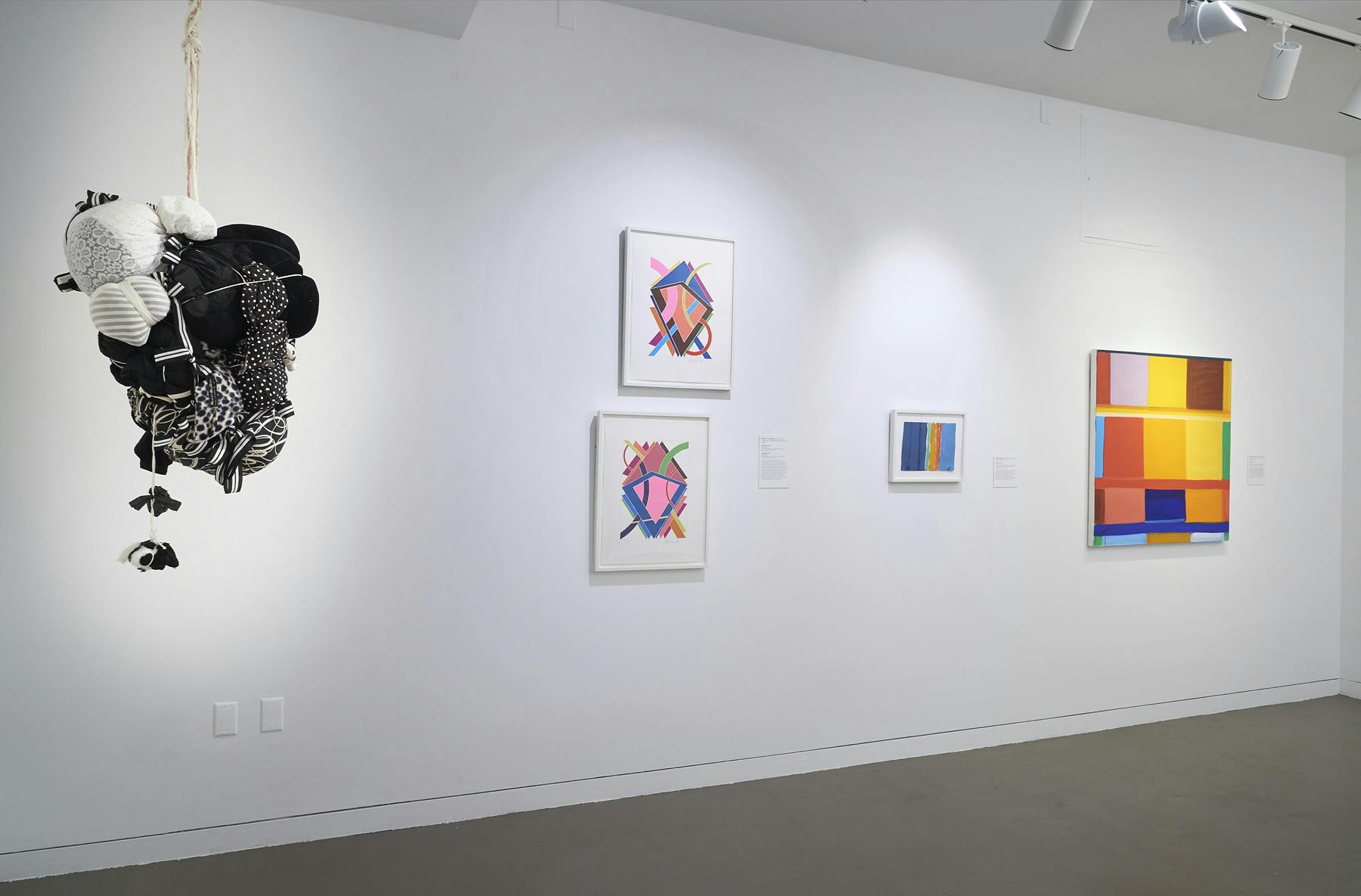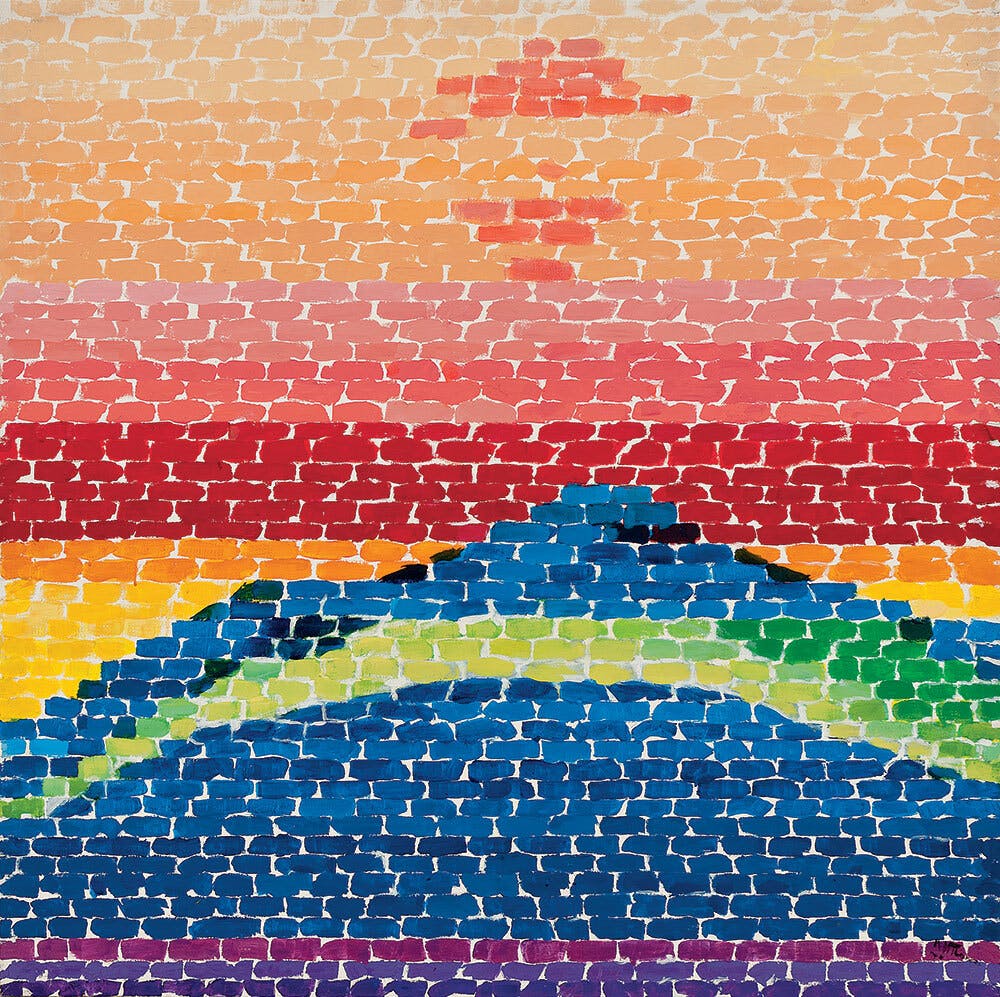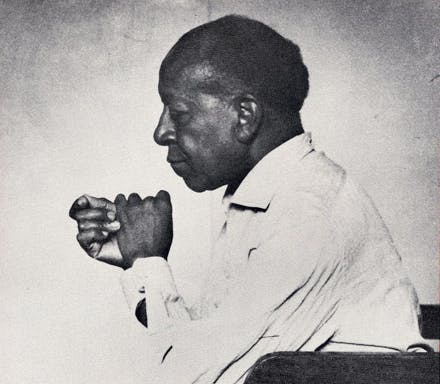Alma Thomas
(1891–1978)Color formed the basis of Alma Thomas’s work. She applied bright paints onto often raw canvases to create lattice-like compositions where patterns appear from negative space.
Biography
Born in Columbus, Georgia, in 1891, Alma Thomas moved with her family to Washington, DC, in 1907. She was the first graduate of the newly formed art department at Howard University in 1924 and earned a master’s degree in education from Columbia University a decade later. After nearly forty years as an art teacher in the DC public school system, Thomas retired in 1960 and began to paint seriously for the first time in her career. Initially representational in her approach, she spent several years after her retirement developing what would become her signature abstract style.
Thomas’s lifelong study of color theory and her gestural, staccato brushstrokes suggesting movement across the canvas expanded upon the work of the contemporaneous Washington Color School and the Abstract Expressionists of the 1940s and 1950s. She cited natural elements as inspiration and often titled her works with allusions to flowers, sun, and wind.
The 1969 moon landing prompted a series of paintings exploring Thomas’s interest in space, a new extension of the natural world around her. Although best known for large-scale acrylic paintings, Thomas also painted watercolors throughout her career. These watercolors, several of which are in The Studio Museum in Harlem’s permanent collection, continued her experimentations with color, line, and pattern.
Thomas achieved considerable success in the last decade of her life. She was the first female African-American artist to have a solo exhibition at the Whitney Museum of American Art in New York in 1972. The Studio Museum mounted solo exhibitions of Thomas’s work in 1983, five years after her death, and in 2016.
Exhibitions and Events
Alma Thomas
(1891–1978)Color formed the basis of Alma Thomas’s work. She applied bright paints onto often raw canvases to create lattice-like compositions where patterns appear from negative space.
Space, 1966
Biography
Born in Columbus, Georgia, in 1891, Alma Thomas moved with her family to Washington, DC, in 1907. She was the first graduate of the newly formed art department at Howard University in 1924 and earned a master’s degree in education from Columbia University a decade later. After nearly forty years as an art teacher in the DC public school system, Thomas retired in 1960 and began to paint seriously for the first time in her career. Initially representational in her approach, she spent several years after her retirement developing what would become her signature abstract style.
Thomas’s lifelong study of color theory and her gestural, staccato brushstrokes suggesting movement across the canvas expanded upon the work of the contemporaneous Washington Color School and the Abstract Expressionists of the 1940s and 1950s. She cited natural elements as inspiration and often titled her works with allusions to flowers, sun, and wind.
The 1969 moon landing prompted a series of paintings exploring Thomas’s interest in space, a new extension of the natural world around her. Although best known for large-scale acrylic paintings, Thomas also painted watercolors throughout her career. These watercolors, several of which are in The Studio Museum in Harlem’s permanent collection, continued her experimentations with color, line, and pattern.
Thomas achieved considerable success in the last decade of her life. She was the first female African-American artist to have a solo exhibition at the Whitney Museum of American Art in New York in 1972. The Studio Museum mounted solo exhibitions of Thomas’s work in 1983, five years after her death, and in 2016.




